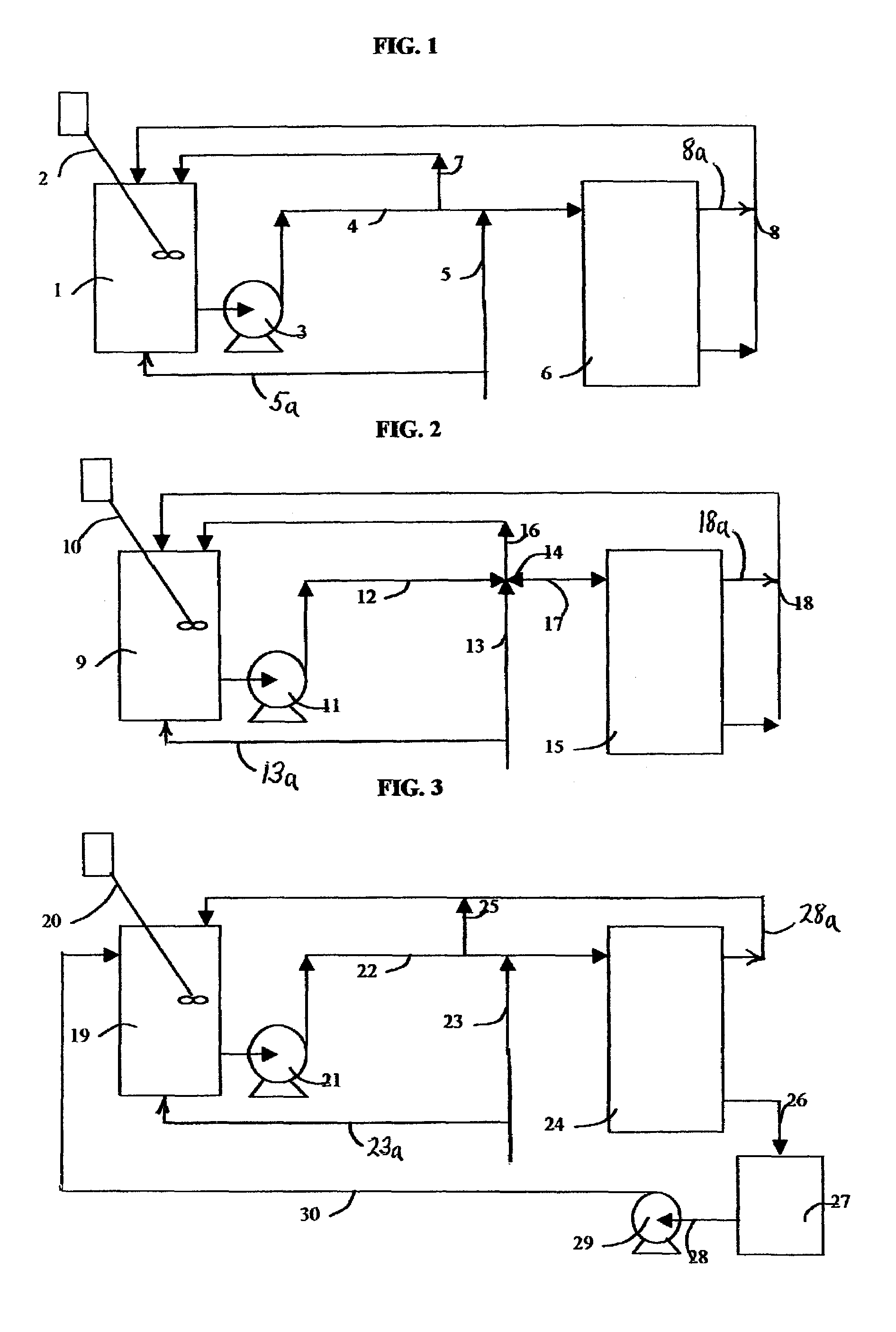Flow of fluid through dilute compartments was by gravity, which limited the rate and compartment size to uneconomic values.
As a result concentrate was in fact very concentrated and was subject to scaling and
precipitation of poorly soluble electrolytes.
a) The need to fill individual compartments in an EDI stack with
ion exchange resin material, e.g. particulates such as resin beads, poses the need to keep such resin in place while assembling the stack, and there are practical difficulties in doing this, especially for relatively large stacks. This has typically required very careful hand
assembly, or use of sealed
layers or modular envelopes of
ion exchange particulates, or other relatively costly steps during
assembly process of the stack. These constructions, in turn, dictate complete disassembly or rebuilding when it is necessary to change
ion exchange packing. Until recently practical external filling and removal of resin particulates has not been done because of lack of any EDI stack designed to be filled with resin particulates after the stack has been assembled; and lack of a process to fill and empty such an assembled stack (e.g., an effective way to move resin particulates into or out of a stack.)
b) Particulate ion-exchange packing is a very good filter medium. Resistance to flow of fluid through packing is increased by material filtered out during operation. In the case of conventional (chemically regenerated) ion exchange deionization, ion exchangers are periodically backwashed at flow rates which expand the volume of particulates, i.e. separating particulates slightly from each other allowing filtered material to escape. However, EDI apparatus typically employs relatively narrow flow passages for diluting and concentrating compartments, constraining flow and particle movement. Until recently such
bed expansion capability has not been a feature of EDI apparatus. Instead EDI has been simply preceded by fine
filtration to
delay or prevent congestion of resin packing. The latter is nevertheless seldom completely effective.
c) Anion exchange particulates tend to sorb negatively charged colloids and
medium molecular weight anions which occur naturally in water. Such sorbed materials (generally termed foulants) interfere with satisfactory operation of EDI apparatus, e.g. by increasing electrical resistance and decreasing rate of transport of ions into the interior of particulates. In an EDI process,
electric current tends to drive such foulants into anion exchange particulates and thereby accelerate
fouling. Until recently EDI stacks have in practice been preceded by
scavenging type anion exchange resin and / or
activated carbon columns to attempt to remove foulants before they can enter stacks. Such pretreatment is costly and seldom completely effective, especially in view of often unpredictable breakthroughs of foulants upon exhaustion of the resin and / or carbon pretreatment column.
d) Precipitates of sparingly soluble inorganic compounds (e.g.,
calcium carbonate,
magnesium hydroxide,
calcium sulfate) tend to form within particulate packing, in anion exchange membranes, or in concentrate compartments of EDI apparatus, when precursors of such compounds are present in fluid processed, because
water splitting that continuously regenerates the resin also causes pH conditions that precipitate scale. Such problem does not exist in conventional ion exchange deionization in which anion- and cation-exchange particulates are separately regenerated with alkali and acid respectively. In conventional
electrodialysis, build-up of such precipitates may be simply addressed largely by frequent, regular reversal of direct
electric current, e.g., a few times per hour.
e) At water dissociating junctions between commercially available anion exchange bodies (e. g. membranes and particulates) and cation exchange bodies,
quaternary ammonium moieties (the usual bound positively charged group in commercially available anion exchange bodies) are rapidly converted to
tertiary amines and / or non-ionized groups, resulting in increased electrical resistance at such junctions and degradation of stack performance. Such conversion may be due to some combination of high
alkalinity, high temperature, and high
electric field in the junctions. There is not an equivalent phenomenon in conventional ion exchange deionization under normal
process conditions. Thus, in the case of EDI until now it has been necessary after some months to a year or so to disassemble a packed stack and replace at least anion selective membranes and preferably also anion exchange particulates. Some EDI stacks are sealed (i.e. membranes and filled inter-membrane spacers are glued together) in which case it may be necessary to replace an entire stack, possibly with exception of screen-filled concentrate spacers.
f) Electrical resistance of packing depends also on area of contact of beads, hence on deformability of beads, on forces causing such deformation, on distribution of bead sizes and any time dependent relaxation of force, e.g., from
cracking of beads. The overall effect is usually a time dependent increase in electrical resistance that may eventually require repair or replacement of a stack. A similar problem does not exist in conventional ion exchange deionization as there is no
electric field.
g) Owing to the
short distance between membranes in packed
electrodialysis apparatus (e.g. about 0.3 centimeters) substantial channeling of processed fluids can occur resulting in less than expected performance.
 Login to View More
Login to View More 


